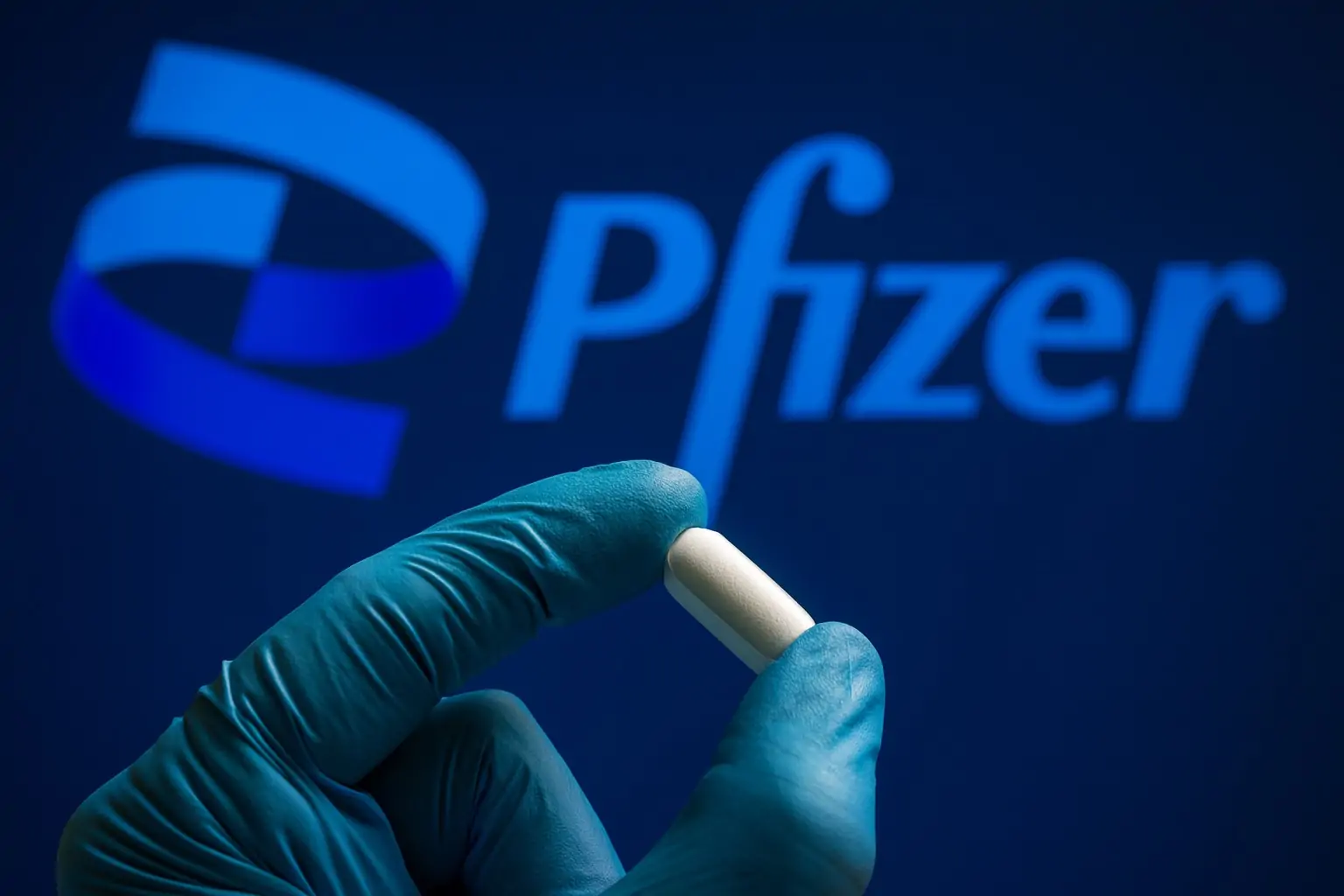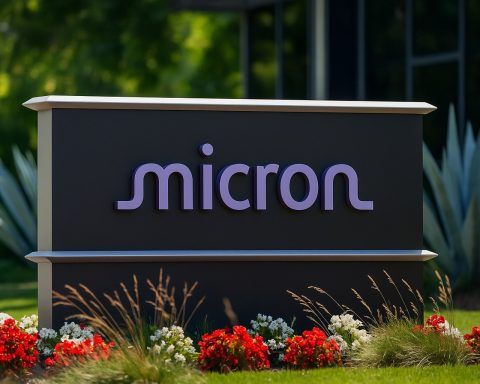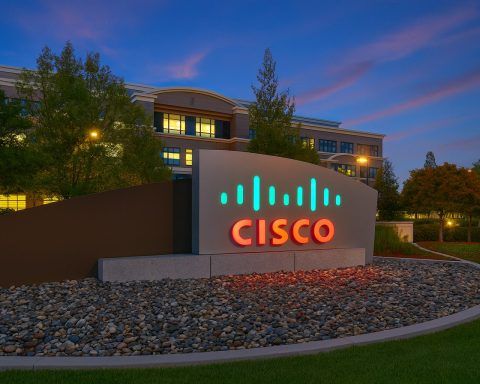Pfizer Inc. (NYSE: PFE) is back in the headlines today with a flurry of developments that span new product launches, obesity-drug M&A, fresh vaccine data and ongoing debate about whether its battered stock is finally a buy.
As of this afternoon, Pfizer shares are trading around $25.28, little changed on the day, and still down roughly 55% from their late‑2022 peak, leaving the dividend yield near the 7% level that has attracted income‑focused investors. [1]
Below is a breakdown of the key Pfizer news and stock drivers for November 17, 2025.
Market snapshot: PFE on November 17, 2025
- Share price: ~$25.3 intraday, with a narrow trading range between about $25.0 and $25.3.
- Wall Street stance: Consensus rating is “Hold” based on 19 analysts, with an average 12‑month price target of $28.28, implying ~13% upside from current levels. [2]
- Valuation backdrop: Commentators note that the stock’s steep decline since the COVID‑19 revenue peak has pushed the dividend yield above 7%, sparking a wave of “value versus value trap” debate in today’s opinion pieces. [3]
Short‑term quantitative models expect relatively muted price moves, with some forecasting PFE to hover around the $25 level over the next few sessions. [4]
1. New migraine tablet launch in India targets a fast‑growing $200 million market
The most concrete business development today comes from India, where Pfizer’s local arm has launched Rimegepant ODT, an orally disintegrating tablet for the acute treatment of migraine. [5]
What Pfizer just launched
- Product: Rimegepant ODT 75 mg (a CGRP receptor antagonist, marketed globally as Nurtec ODT). [6]
- Indication in India: Acute treatment of migraine with or without aura in adults who previously had insufficient response to triptan drugs (the standard of care). [7]
- Form factor: A tablet that dissolves on the tongue without water, designed for convenience and rapid onset. [8]
- Clinical promise: Indian coverage highlights fast pain relief lasting up to 48 hours, with no signal for medication‑overuse headache in clinical data. [9]
Why India matters for Pfizer
- The Indian anti‑migraine market was about $197–200 million in 2024 and is projected to top $400 million by 2030, according to Business Standard. [10]
- Migraine affects an estimated 213 million people in India, with around 17.3 lost working days per patient per year, underlining a sizable unmet need. [11]
For Pfizer shareholders, the immediate revenue impact from India is small relative to global sales, but the launch does three important things:
- Expands the Nurtec/Rimegepant franchise into a large, under‑penetrated market.
- Showcases Pfizer’s neurology ambitions and willingness to invest in localization.
- Adds another non‑COVID, non‑obesity growth driver, which investors increasingly focus on as the company diversifies away from pandemic products.
2. Real‑world data boost confidence in Pfizer’s RSV vaccine
Also published today, Medscape reported strong real‑world effectiveness data for Pfizer’s RSVpreF vaccine (marketed as Abrysvo) in older adults. [12]
Key takeaways from the study:
- Conducted at Kaiser Permanente Southern California in adults ≥60 years who sought emergency care or hospitalization for acute respiratory illness (ARI). [13]
- The vaccine showed about 90–92% effectiveness against RSV‑related ARI requiring ED visits or hospitalizations. [14]
- Effectiveness was roughly 95% in patients 75+ and in those with high‑risk chronic conditions. [15]
- The work was funded by Pfizer, and several authors are employees or shareholders, a fact disclosed in the paper. [16]
Abrysvo already competes head‑to‑head with GSK’s Arexvy in the burgeoning RSV market. Earlier this year, the FDA required both vaccines to carry a warning about a rare neurological disorder risk, which had raised safety concerns. [17]
Today’s effectiveness data help support the long‑term commercial case for Abrysvo by showing robust protection in real‑world settings, although uptake and pricing will still depend on payer coverage and physician comfort.
3. Competition heats up in lung cancer as Nuvalent targets Pfizer’s Lorbrena
On the oncology side, a Fierce Biotech piece today spotlights fresh Phase 1/2 data from Nuvalent’s ALK inhibitor neladalkib, which is being positioned directly against Roche’s Alecensa and Pfizer’s Lorbrena in ALK‑positive non‑small cell lung cancer. [18]
Highlights from the ALKOVE‑1 trial:
- In heavily pretreated patients who had received prior ALK TKIs (including Lorbrena), neladalkib posted a 31% overall response rate, with responses showing encouraging durability (over half still ongoing at 18 months). [19]
- In a cohort whose disease had not yet been treated with Lorbrena, the response rate was about 46%, with high proportions of responses still ongoing at 12–18 months. [20]
- Among TKI‑naïve patients, Nuvalent reported an 86% response rate and a 9% complete response rate. [21]
Nuvalent plans to discuss a potential approval filing with the FDA, and is also running a Phase 3 trial in earlier‑line disease. [22]
For Pfizer, that means:
- Lorbrena’s franchise is likely to face tougher competition in future lines of therapy.
- Investors will be watching whether Pfizer can maintain or grow its share in ALK‑positive lung cancer as new TKIs arrive with potentially better tolerability or durability.
4. Metsera deal closes: Pfizer doubles down on obesity
Another important storyline reaching investors today is confirmation, via industry press, that Pfizer has completed its acquisition of obesity‑focused biotech Metsera, in a deal structured with both cash and contingent value rights. [23]
According to Reuters, Pfizer ultimately clinched an up to $10 billion deal for Metsera after a fierce bidding war with Novo Nordisk, paying $65.60 per share upfront plus up to $20.65 per share tied to future milestones. [24]
Key pipeline assets now joining Pfizer:
- MET‑097i – a once‑monthly GLP‑1 injectable headed toward Phase 3 trials, designed to compete with weekly GLP‑1s from Novo Nordisk and Eli Lilly. [25]
- MET‑233i – an amylin analog, tested alone and in combination with MET‑097i. [26]
- An oral GLP‑1 and several earlier‑stage hormone‑based programs focused on obesity and cardiometabolic disease. [27]
The acquisition is expected to be dilutive to earnings through 2030 as Pfizer invests in late‑stage trials, but it gives the company a credible path back into the lucrative obesity market after earlier in‑house efforts faltered. [28]
For PFE investors, today’s coverage reinforces the message that Pfizer’s future growth story will lean heavily on obesity, RSV and oncology, rather than COVID‑19 products.
5. Wall Street debate: “Down 55% — is Pfizer finally a buy?”
Today’s news cycle is also packed with PFE stock think‑pieces:
- A fresh Motley Fool article titled “Down 55%, Should You Buy the Dip on Pfizer?” argues that despite patent cliffs and a high payout ratio, Pfizer remains a durable pharmaceutical giant and might be attractive for long‑term income investors, thanks to its elevated yield and deep pipeline. [29]
- Another Motley Fool piece, “2 Giant Healthcare Stocks to Buy Hand Over Fist,” features Pfizer alongside Medtronic as large‑cap health stocks that could reward patient investors if current turnaround efforts succeed. [30]
- On the sell‑side, Daiwa Securities today cut its price target on Pfizer from $29 to $27 but maintained an “Outperform” rating, signaling cautious optimism despite near‑term headwinds. [31]
Consensus data from MarketBeat back up that mixed tone: a “Hold” recommendation, with 1 Sell, 12 Hold, 4 Buy and 2 Strong Buy ratings, and an average target of $28.28. [32]
In short, today’s commentary underscores that valuation is compelling, but execution and pipeline delivery remain under the microscope.
6. Big‑money investors: some trimming, some holding firm
Several 13F‑based articles out today show how institutional investors are positioning around Pfizer:
- LSV Asset Management reported holding about $391.5 million in Pfizer stock, underscoring that some value‑oriented funds still see opportunity in the name. [33]
- The Ontario Teachers’ Pension Plan Board added roughly 25,000 shares of PFE in the latest quarter, according to a separate MarketBeat report. [34]
- By contrast, hedge fund Knott David M Jr trimmed its Pfizer stake by more than 70%, ending the quarter with around 74,500 shares worth about $1.8 million, now under 1% of its portfolio. [35]
And just a few days ago, activist investor Starboard Value disclosed it had exited its Pfizer position after previously pushing for changes at the company. [36]
Taken together, the flows suggest:
- No wholesale exodus from institutions — long‑only value and income funds continue to hold or accumulate.
- But some hedge funds and activists are moving on, perhaps reflecting limited near‑term catalysts or frustration with the pace of the turnaround.
7. Fundamentals: Q3 earnings and 2025 guidance frame today’s news
Much of the discussion around PFE today is anchored in the company’s Q3 2025 results, released earlier this month:
- Q3 2025 revenue: $16.65 billion, down 6% year over year as COVID‑related sales continued to fade. [37]
- Adjusted diluted EPS: $0.87 for the quarter (down 18% year over year), but up slightly (3%) on a year‑to‑date basis. [38]
- 2025 guidance:
- Revenue reaffirmed at $61–64 billion.
- Adjusted EPS guidance raised and narrowed to $3.00–$3.15, from $2.90–$3.10 previously. [39]
Management highlighted:
- Growth in the non‑COVID portfolio,
- Ongoing cost‑cutting and productivity initiatives, and
- A commitment to deploy capital into high‑conviction R&D and business development — which now clearly includes the substantial bet on Metsera and obesity. [40]
Today’s product and pipeline headlines (Rimegepant in India, new RSV data, obesity assets) fit neatly into this narrative of pivoting the company toward a new set of durable growth drivers.
8. What today’s news means for Pfizer (PFE) investors
Putting all of November 17’s developments together:
- Execution on new launches is real, not theoretical.
- The Indian Rimegepant ODT launch shows Pfizer can still move quickly to commercialize innovative, non‑COVID assets in large markets. [41]
- Vaccines remain a key long‑term pillar.
- Strong real‑world results for the RSVpreF vaccine support the narrative that Abrysvo can be a meaningful, recurring revenue stream if safety concerns remain manageable. [42]
- Obesity is now central to the investment case.
- The finalized Metsera deal gives Pfizer a portfolio of GLP‑1 and amylin programs that could, years from now, contend with blockbuster products from Eli Lilly and Novo Nordisk — though that path is risky and expensive. [43]
- Competition risk is real in oncology.
- Nuvalent’s bid to challenge Lorbrena underscores that Pfizer cannot rely on existing cancer drugs to carry growth without continuous innovation. [44]
- Sentiment is mixed but stabilizing.
- Analysts mostly sit at “Hold” with modest upside targets, and institutional flows show both believers and sceptics at the table. [45]
From a stock‑market perspective, today doesn’t bring a single “blockbuster headline,” but it adds incremental evidence that Pfizer is actively reshaping its portfolio — and that investors are still debating how much of that future is already priced into a $25 stock.
Important note
This article is for informational and educational purposes only and does not constitute investment advice, a recommendation, or an offer to buy or sell any securities. Always do your own research and consider consulting a qualified financial adviser before making investment decisions.
References
1. www.sharewise.com, 2. www.marketbeat.com, 3. www.fool.com, 4. coincodex.com, 5. www.business-standard.com, 6. en.wikipedia.org, 7. m.economictimes.com, 8. www.business-standard.com, 9. m.economictimes.com, 10. www.business-standard.com, 11. www.business-standard.com, 12. www.medscape.com, 13. www.medscape.com, 14. www.medscape.com, 15. www.medscape.com, 16. www.medscape.com, 17. www.reuters.com, 18. www.fiercebiotech.com, 19. www.fiercebiotech.com, 20. www.fiercebiotech.com, 21. www.fiercebiotech.com, 22. www.fiercebiotech.com, 23. www.digitalhealthnews.com, 24. www.reuters.com, 25. www.reuters.com, 26. www.reuters.com, 27. www.digitalhealthnews.com, 28. www.digitalhealthnews.com, 29. www.fool.com, 30. www.fool.com, 31. www.marketscreener.com, 32. www.marketbeat.com, 33. www.marketbeat.com, 34. www.marketbeat.com, 35. www.marketbeat.com, 36. www.reuters.com, 37. www.businesswire.com, 38. www.businesswire.com, 39. www.businesswire.com, 40. investors.pfizer.com, 41. www.business-standard.com, 42. www.medscape.com, 43. www.reuters.com, 44. www.fiercebiotech.com, 45. www.marketbeat.com







